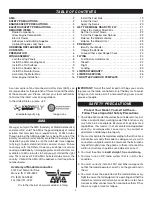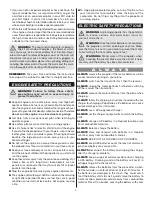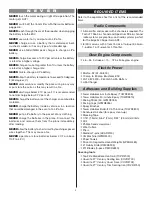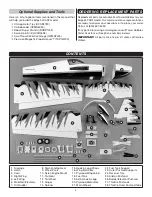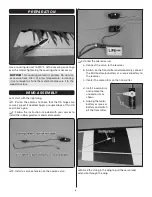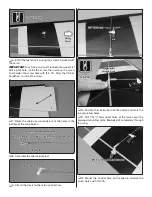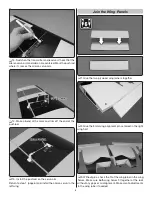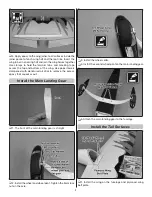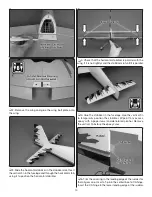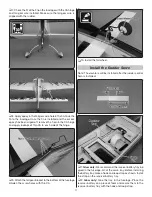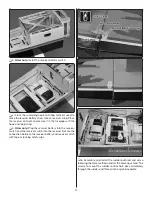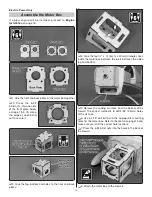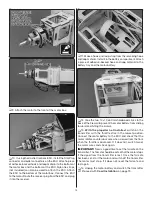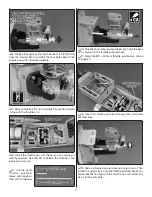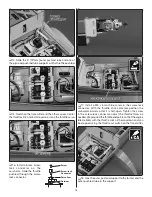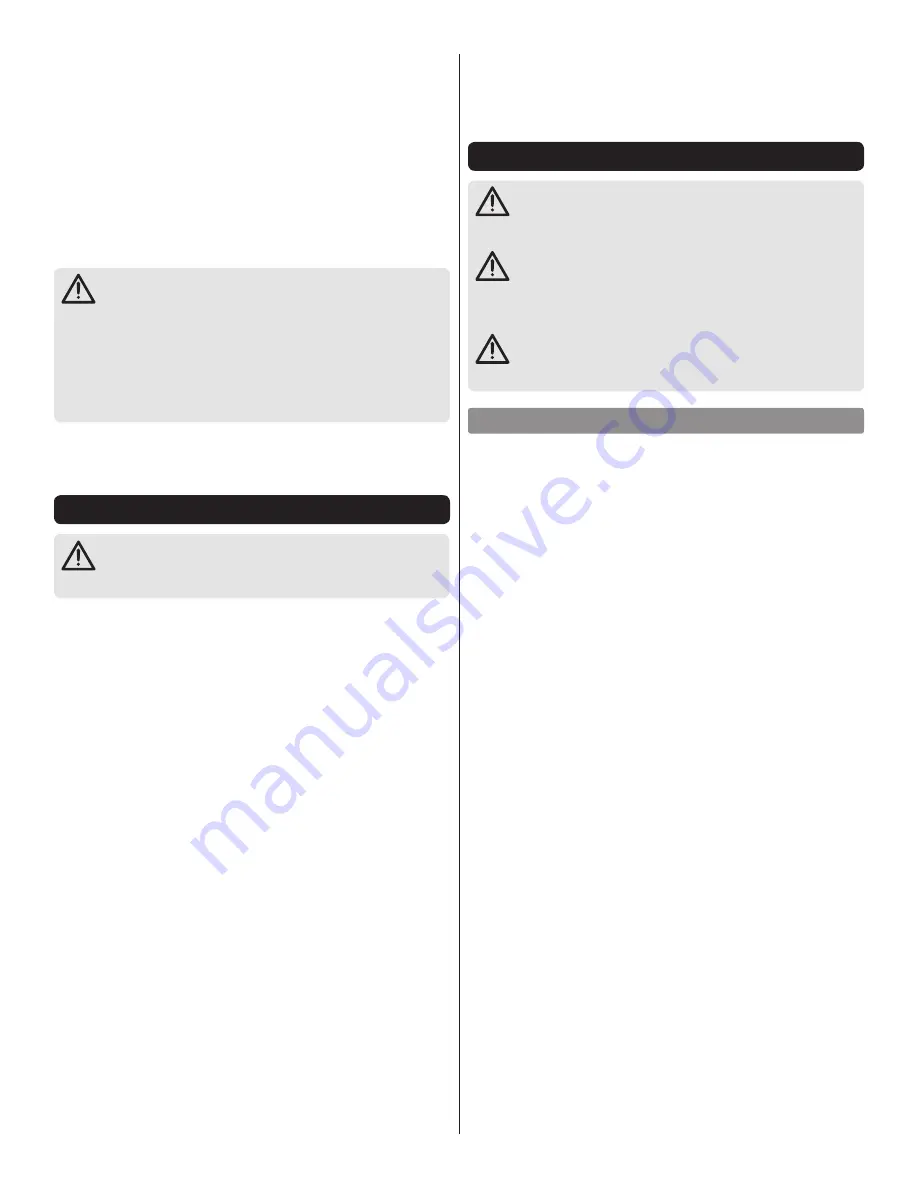
3
7. If you are not an experienced pilot or have not fl own this
type of model before, we recommend that you get the
assistance of an experienced pilot in your R/C club for
your fi rst fl ights. If you’re not a member of a club, your
local hobby shop has information about clubs in your area
whose membership includes experienced pilots.
8. While this ARF has been fl ight tested to exceed normal use,
if an engine or motor larger than the one recommended is
used, the modeler is responsible for taking steps to reinforce
the high stress points and/or substituting hardware more
suitable for the increased stress.
WARNING:
The cowl and wheel pants included in
this kit are made of fi berglass, the fi bers of which
may cause eye, skin and respiratory tract irritation. Never
blow into a part to remove fi berglass dust, as the dust will
blow back into your eyes. Always wear safety goggles, a
particle mask and rubber gloves when grinding, drilling and
sanding fi berglass parts. Vacuum the parts and the work
area thoroughly after working with fi berglass parts.
REMEMBER:
Take your time and follow the instructions
to end up with a well-built model that is straight and true.
ENGINE SAFETY PRECAUTIONS
WARNING:
Failure to follow these safety
precautions may result in severe injury to
yourself and others.
●
Keep all engine fuel in a safe place, away from high heat,
sparks or fl ames, as fuel is very fl ammable. Do not smoke
near the engine or fuel; and remember that engine exhaust
gives off a great deal of deadly carbon monoxide. Therefore
do not run the engine in a closed room or garage
.
●
Get help from an experienced pilot when learning to
operate engines.
●
Use safety glasses when starting or running engines.
●
Use a “chicken stick” or electric starter to start the engine.
If you do fl ip the propeller with your fi ngers, wear a heavy
leather glove, such as a welder’s glove. If the engine should
backfi re, the large prop can cause severe injury to your
hand and fi ngers.
●
Do not run the engine in an area of loose gravel or sand;
the propeller may throw such material in your face or eyes.
●
Keep your face and body as well as all spectators away
from the plane of rotation of the propeller as you start and
run the engine.
●
Keep these items away from the prop: loose clothing, shirt
sleeves, ties, scarfs, long hair or loose objects such as
pencils or screwdrivers that may fall out of shirt or jacket
pockets into the prop.
●
Stop the engine before making any engine adjustments.
●
The engine and muffl er get hot! Do not touch them during
or right after operation. Make sure fuel lines are in good
condition so fuel will not leak onto a hot engine, causing
a fi re.
●
To stop a glow powered engine, set-up a throttle cut on
your transmitter to completely close the barrel of the
carburetor. Do not throw anything into the propeller of
a running engine.
ELECTRIC SAFETY PRECAUTIONS
WARNING:
A spinning propeller has the potential
to cause serious and permanent injur y to
yourself and others.
WARNING:
Once the motor batteries are connected,
the propeller can start spinning at any time. Make
sure the fail safe is set on your radio to prevent the motor
from starting if the transmitter signal is lost.
WARNING:
Stand clear of the propeller when
handling the aircraft. Make sure the aircraft is held
securely until the battery has been disconnected.
A
L
W
A
Y
S
ALWAYS
remove the propeller if the motor batteries will be
connected while working on your plane.
ALWAYS
switch on the transmitter fi rst, then the receiver.
ALWAYS
unplug the motor batteries fi rst before switching
off the receiver then transmitter.
ALWAYS
remove the motor batteries from the plane when
charging.
ALWAYS
follow the charging instructions included with your
charger for charging LiPo batteries. LiPo batteries can cause
serious damage or fi re if misused.
ALWAYS
use a LiPo-approved charger.
ALWAYS
set the charger’s output volts to match the battery
volts.
ALWAYS
charge a LiPo battery in a fi reproof location away
from combustible materials.
ALWAYS
balance charge the battery.
ALWAYS
store and transport LiPo batteries in a fi reproof
container away from combustible materials.
ALWAYS
KEEP OUT OF THE REACH OF CHILDREN.
ALWAYS
keep LiPo batteries out of the reach of animals. A
punctured battery may cause a fi re.
ALWAYS
disconnect the battery and unplug the charger
after the charge is complete.
ALWAYS
keep a supply of sand accessible when charging
a LiPo battery. Dumping sand on the battery will assist in
extinguishing a LiPo chemical fi re.
ALWAYS
remove the batteries from the plane after a crash.
Set them aside in a safe location for at least 20 minutes. If
the batteries are damaged in the crash, they could catch
fi re. If the battery starts to swell, quickly move the battery to
a safe location, preferably outside away from combustible
material. Place it in a bucket, covering the battery with sand.


